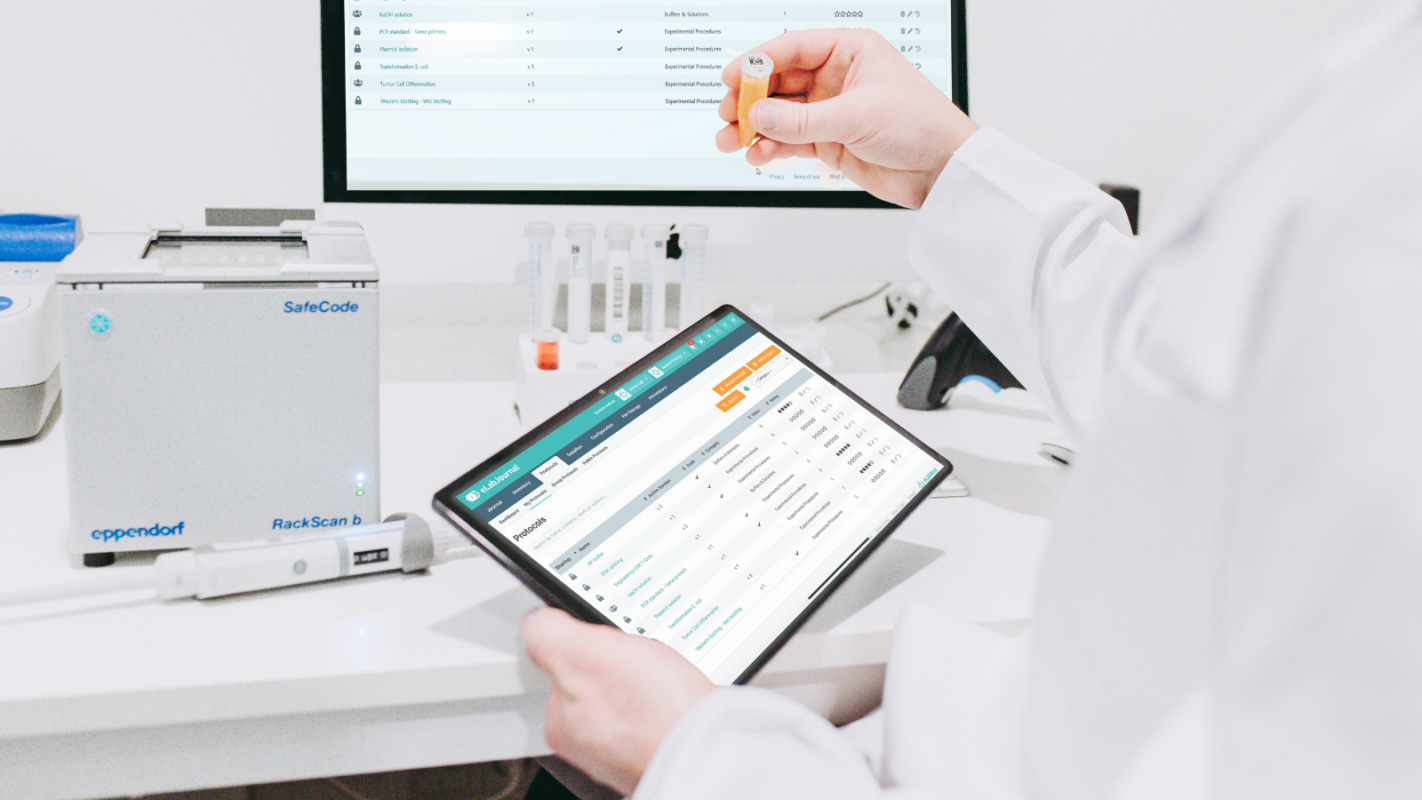

 By eLabNext
3 min read
11 Oct 2023
By eLabNext
3 min read
11 Oct 2023
Starting up a new laboratory, whether you’re leading a new discovery team at a company or opening up an academic research lab at a university, is exciting. Many things are on your “to-do” list, including purchasing equipment and consumables, personnel recruiting and hiring, and establishing workflows. Among these new things is organizing your operations to generate high-quality, reproducible data efficiently.
After all, this will form the foundation for proving long-term success by meeting milestones, getting funding, and publishing papers.
Implementing an electronic lab notebook (ELN) can significantly improve organization, collaboration, and reproducibility in any research lab, and identifying an ELN platform that meets your lab’s needs is likely top-of-mind for any new PI or lab head.
Here are some critical steps to identifying and implementing an ELN platform in a brand-new research lab.
Before implementing an ELN, assessing your lab’s needs and choosing an ELN platform that meets them is essential. Consider these five key questions:
Many ELN platforms are available, both free and paid, and answering the above questions can help you narrow down the platforms that are a good fit. It’s important to choose a user-friendly, secure platform with the features you need now but can expand its functionality for the future. Creating a checklist that compares and contrasts your various ELN options is helpful during your evaluation process.
Once you’ve chosen an ELN platform, you must set up user accounts for everyone in your lab using the ELN. You’ll also need to set permissions for each user, which will determine what they can and can’t do within the ELN. For example, you may give some users permission to create new experiments and enter data, while others may only have permission to view data.
To make it easier for users to enter data into the ELN, you can create templates for different types of experiments. These templates can include things like protocols, reagents, and expected results. Templates help ensure that experiments are conducted consistently and data is entered in a standardized format.
Before you start using the ELN, training everyone in your lab on how to use it is crucial. This may involve providing tutorials or training sessions and documentation on how to use the ELN. Make sure everyone in your lab understands how to enter data, search for data, and collaborate with others in the ELN. Identify digitalisation leaders within your lab who are strong ELN advocates and know the platform inside and out to field questions and help move implementation and adaptation along.
Bonus feature: If your ELN provider can undertake training and provide supporting resources, this will decrease implementation time!
Once everyone in your lab is trained on using the ELN, you can start using it actively for your research. Encourage everyone in your lab to use the ELN consistently and to document their experiments in detail. This will help ensure that your research and data are well-documented and reproducible. This may be the most time-consuming and arduous process, but learning to use an ELN properly and using it often are necessary skills when working in a research lab in 2023 and beyond.
After using the ELN for a while, evaluating how well it’s working for your lab is essential. Are there any features that are missing? Are there any problems with the ELN that need to be addressed? If this is your first time using an ELN, approach its use with the same rigour as you do your experiments. Encourage feedback from everyone in your lab and use that feedback to improve your ELN implementation over time. Furthermore, ensure that this feedback is relayed to your ELN provider and that your feature improvements are actively considered and employed when applicable!
Implementing an ELN can take time and effort, but it can be well worth it in the long run. Using an ELN can improve your research lab’s organization, collaboration, and reproducibility. This will take your research process to the next level and make the challenging process of opening up a new research space that much easier!
Contact us if you have any questions or are interested in starting your ELN journey.

 By eLabNext
By eLabNext
Gain valuable strategies for choosing the right lab space, fostering collaboration, and achieving more with less money.
Read more
 By Zareh Zurabyan
By Zareh Zurabyan
From data quality to ethical considerations, learn how to navigate AI challenges while optimising integration for enhanced lab operations.
Read more
 By eLabNext
By eLabNext
Learn how to optimise lab procurement as part of a robust inventory management regime. Explore best practices and streamline lab ops.
Read more
Schedule a Personal Demo for friendly expert guidance and a free lab workflow assessment.